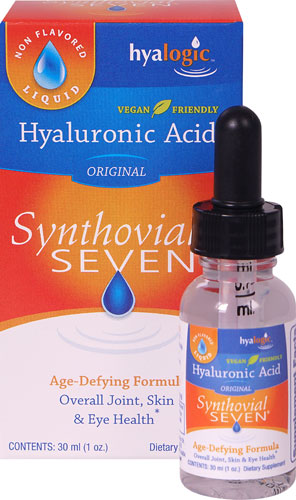Quick quiz: What's better for arthritis-related joint pain—ice or heat?
Both could help, according to the Cleveland Clinic. Ice can calm inflamed joints. Heat relaxes muscles, which move joints, potentially easing stiffness.
You might find other facts about joints and arthritis surprising, including that exercise is good for arthritic joints, even if you feel rigid (as long as your joints aren't hot, red or swollen). And, incongruous as it sounds, some joints are immobile, like those in your skull, two more fun facts. But let's not get ahead of ourselves.
There are several types of joints, mobile and immobile, but usually when we think of joints, we’re concerned with the ones that let us climb stairs, reach high shelves or grip pens. Those joints—synovial—are the most prevalent kind in your body and the kind we’ll focus on. They have many components, including fascia, ligaments, tendons, synovial fluid and cartilage.
A joint, which is a point where bones come together, gets stronger when its ligaments and tendons get stronger, along with the muscles that support it (reason #1 for exercising arthritic joints, as mentioned above). Joints don't have their own direct blood supply, so careful and regular movement keeps them healthy (reason #2).
Moving aggressively can damage protective cartilage though, leading to, or worsening, osteoarthritis, the most common kind of arthritis. Other causes of osteoarthritis include overuse of a joint, bone misalignment, poor biomechanics, chronic inflammation and genetics. Increased age contributes too because the quality of cartilage, which smooths joint movement, degrades over time. Eventually, bones might rub right against each other.
Guidelines to protect joints—whether or not you have arthritis:
- If your joints hurt during exercise, back off. Try to distinguish between pain and stiffness: Pain is bad, but stiffness is generally okay.
- Understand mobile joints and their ranges of motion. This isn’t the whole story, but it’ll suffice:
Intervertebral joints are in your spine. They move sideways, forward, backward and rotate, to different degrees in different parts of your vertebral column.
Hinge joints are in your elbows, knees, ankles, fingers and toes. They bend and straighten, although your knee joint also glides.
Ball-and-socket joints are in your hips and shoulders, and perform all the aforementioned actions, plus moving in circles (circumduction). They have the largest range of motion.
- Know how to move:
Stretching, strength training and cardio work are all good for joints—if performed properly. Make sure your joints' surfaces meet correctly. To encourage this, maintain good posture, for example, which lets your spinal vertebrae absorb weight properly. Also, before moving your limbs, set yourself up for good alignment by initiating action from the joints closest to your core: shoulders and hips. Makes sense to start where the biggest range of motion is, right?
For example: If you're standing with feet pointed ahead and want to turn a foot out, turn your hip out; your knee and foot (ankle) will naturally follow. This way the mobility in your hip—where you have the greatest range of motion—dictates your overall range of motion, preventing you from going beyond, thus protecting your knee, the next joint as you move out from your core.
Exercise isn't the only way to keep joints healthy. So is a diet that fights chronic inflammation (think: fruits and veggies, and stay away from added sugar).
Certain supplements have been shown to help some people (key word “some”) with osteoarthritis too. The Cleveland Clinic recommends taking glucosamine with chondroitin for three months. If nothing changes, quit.
Closing quiz: Cold, wet weather bothers arthritic joints—fact or myth?
The jury is still out. Myth according to Cleveland Clinic and Harvard Medical School, which cites a recent study that involved 11 million medical visits. Still, some health experts acknowledge that changes in barometric pressure can make joints achy, and the Arthritis Foundation points to a small study that links weather and arthritis pain.
Journalist and yoga instructor Mitra Malek has arthritis in one pinky, due to the finger’s incongruous bone alignment, which she ignored during a racquetball game a decade ago. She’s been better to the digit ever since learning more about joints and arthritis.




